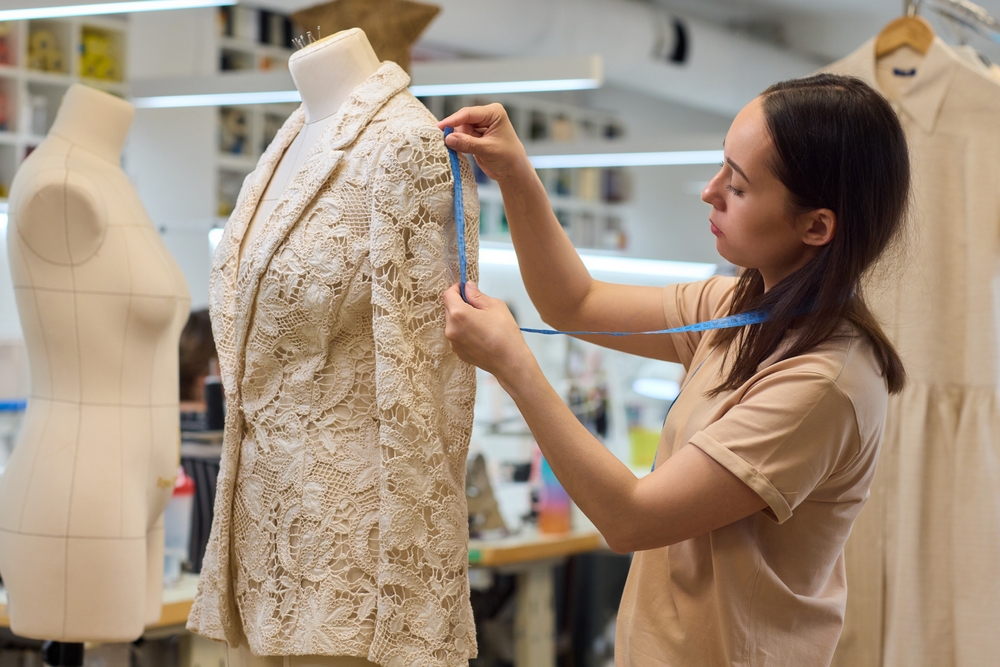Become an internationally recognized stylist
In the ever-evolving world of fashion, becoming an internationally recognized stylist is a dream for many aspiring designers. A comprehensive Fashion Designing Course can be the perfect stepping stone to turn this dream into reality. Such courses offer a unique blend of creativity, technical skills, and industry insights that can propel your career to new heights. Let's explore how these programs can help you carve your niche in the global fashion landscape.

What does a Fashion Designing Course typically include?
A well-structured Fashion Designing Course covers a wide range of topics essential for success in the industry. Students can expect to delve into color theory, textile science, pattern making, and garment construction. The curriculum often includes modules on fashion history, trend forecasting, and sustainable design practices. Additionally, courses frequently incorporate computer-aided design (CAD) software training, ensuring students are proficient in industry-standard tools.
How can practical workshops develop your creativity?
One of the most valuable aspects of a Fashion Designing Course is the opportunity to take part in practical workshops to develop your creativity. These hands-on sessions allow students to experiment with different materials, techniques, and styles. By working on real projects, aspiring stylists can hone their skills in draping, sketching, and prototyping. These workshops often simulate real-world scenarios, challenging students to create collections under time constraints or for specific client briefs.
What exclusive resources are available to launch your fashion career?
Fashion Designing Courses provide access to exclusive resources to launch your fashion career. These may include state-of-the-art design studios, cutting-edge technology, and extensive fabric libraries. Many programs also offer partnerships with leading fashion houses, giving students the chance to intern or collaborate on industry projects. Additionally, students often gain access to specialized software, trend forecasting services, and industry publications that are typically out of reach for individuals outside of established fashion circles.
How can joining a community of designers benefit your career?
When you enroll in a Fashion Designing Course, you join a community of passionate and innovative designers. This network can be invaluable for your career growth. Peer-to-peer learning, collaborative projects, and shared experiences all contribute to a rich educational environment. Moreover, these connections often extend beyond graduation, forming the basis of a professional network that can lead to job opportunities, collaborations, and ongoing support throughout your career.
What skills are essential for becoming an internationally recognized stylist?
To become an internationally recognized stylist, you need to develop a diverse skill set. A strong foundation in design principles is crucial, but it’s equally important to cultivate business acumen and marketing skills. Fashion Designing Courses often include modules on brand development, fashion merchandising, and digital marketing. Understanding global fashion markets, cultural sensitivities, and sustainable practices is also vital for success on the international stage. Many courses now emphasize the importance of adaptability and innovation, preparing students for the rapidly changing landscape of the fashion industry.
How do Fashion Designing Courses prepare you for the global market?
Fashion Designing Courses are tailored to prepare students for the global market through various strategies. Many programs offer study abroad opportunities or international fashion weeks participation, exposing students to diverse fashion cultures. Courses often include modules on international fashion business, global supply chain management, and cross-cultural communication. Some institutions have partnerships with foreign design schools, allowing for student exchanges or dual degree programs. Additionally, courses frequently invite international guest lecturers and industry experts to provide global perspectives and insights.
What are the costs associated with Fashion Designing Courses?
When considering a Fashion Designing Course, it’s important to understand the potential costs involved. These can vary significantly depending on the institution, location, and program duration. Here’s a comparison of some internationally recognized fashion design programs:
| Institution | Location | Program Duration | Estimated Tuition Cost (USD) |
|---|---|---|---|
| Parsons School of Design | New York, USA | 4 years (BFA) | $200,000 - $250,000 |
| Central Saint Martins | London, UK | 3 years (BA) | $80,000 - $100,000 |
| Fashion Institute of Technology | New York, USA | 2-4 years | $60,000 - $120,000 |
| ESMOD | Paris, France | 3 years | $40,000 - $60,000 |
| Istituto Marangoni | Milan, Italy | 3 years | $70,000 - $90,000 |
Prices, rates, or cost estimates mentioned in this article are based on the latest available information but may change over time. Independent research is advised before making financial decisions.
It’s worth noting that these costs typically cover tuition only. Additional expenses such as accommodation, materials, and living costs should also be factored into your budget. Many institutions offer scholarships or financial aid options for talented students, which can significantly reduce the overall cost of education.
Embarking on a Fashion Designing Course is a significant step towards becoming an internationally recognized stylist. These programs offer a unique combination of creative development, technical training, and industry exposure that can set you apart in the competitive world of fashion. By taking advantage of practical workshops, exclusive resources, and a supportive community of fellow designers, you can build a strong foundation for a successful career in global fashion. Remember that while the journey may be challenging, the skills and connections you gain can open doors to exciting opportunities worldwide.
The shared information of this article is up-to-date as of the publishing date. For more up-to-date information, please conduct your own research.






